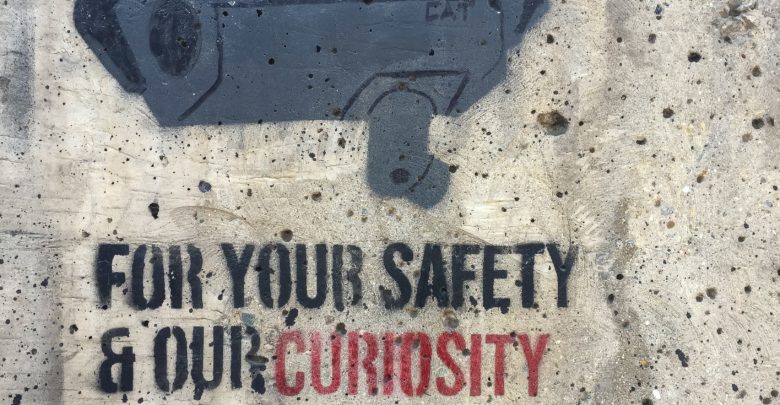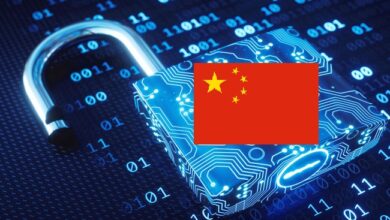Data ProtectionTechnology Law / Cyber Law
Disadvantages of Bluetooth Based Tracking Systems

The spread of Coronavirus due to community transmission cases have been reported in many countries. Community transmission is generally the third stage of any pandemic outbreak, and it’s the most dangerous one, to say the least. In this case, a person who is affected doesn’t have any international travel history to the disease affected countries or is not in contact with a confirmed case, but still gets infected. To ensure that our country does not reach the stage of community transmission, the Government of India has taken many steps. Consequently, The launch of the Aarogya Setu app seems to be a stepping stone in our battle against the Coronavirus. But is it really? Let us have a look.
The Arogya Setu app primarily uses GPS and Bluetooth technologies, to identify the location of any user in a coronavirus hit area, and also determines if they are six feet from away from any COVID-19 patient or not. But let’s stress particularly upon the use of Bluetooth technology in this particular article, and how it compares to other relevant technologies, which are being used to counter this deadly pandemic. Technologies like GPS and Geo-Fencing have been dealt with in the previous article.
A Bluetooth Tracker is a small gadget that is attached to things to keep a track over them. It uses Bluetooth Low Energy to wirelessly connect to your mobile device, and further keep and transmit data through that device, and through that connection.[1] Each Bluetooth tracker has a unique signature that is only known to its owner once they connect the Bluetooth gadget to their user account on the accompanying mobile app. In a way, it is ensured that any unauthorized person cannot track the tracker. The tracker will be able to find the device. Moreover, it uses Bluetooth Low Energy for its connection, so it uses less power. The Bluetooth tracking system has many advantages, so it should be encouraged to be used more and more. Some of the advantages of Bluetooth Tracking Systems include: it avoids interference from other wireless devices and is only connected to the particular device. It has lower power consumption and can be easily updated to the latest model. These devices are available at a nominal cost. This technology can be adapted in many products such as in-car systems, webcams, etc.
Bluetooth Tracking System at the same time doesn’t come without its own set of loopholes. The Bluetooth technology uses short-range wireless data for transmission, so it doesn’t work properly in crowded areas. It will function poorly if the person goes to the market or to any crowded place. Bluetooth is an energy-efficient technology so it slowly drains down the battery of mobile devices[2]. When Bluetooth is enabled they continuously scan for signals, they always look for new devices to connect which use a considerable amount of energy. Another shortcoming of this device may be that it is often misunderstood as a GPS device. There is a range in which Bluetooth devices can track things. If the thing goes out of that range then you may not be able to find it. They have a range of about 15 to 20 meters. This means that your proximity to your tracker will determine whether you will be able to locate it or not[3]. For example, if you forgot a camera bag at the office with a tracker inside, the application will tell you where it last had access to the bag. If the bag is still at the office when you return, the app will reconnect and show you where the bag is located. However, if someone takes the bag and leaves the office, you probably won’t be in range. It becomes difficult to locate it. In this, live tracking of things is not possible, which, more often than not, leads to the situation taking a backseat. In the current pandemic, if a person has been asked to quarantine, the usage of the said technology enables the police to receive alerts if the person is found to have violated the quarantine instruction, or has shut down his/her phone or has moved to another tower. However, another problem with this is that the police cannot be absolutely certain about the use of this technology, since there is a high probability that a person might leave his phone inside the house and go out, in order to trick or fool the requisite authorities. The physical presence of the person thus, cannot be ensured.
Since the spread of the virus has taken place at such a rapid pace as of late, it has forced many academicians and entrepreneurs to work on other tracing apps. One such app is the proposed “COVID-Watch App” (installed in phones) which uses Bluetooth as a kind of proximity detector[4]. This app will constantly ping Bluetooth signals to nearby phones looking for others that might be running apps within the same range of approximately two meters. If the phones of the user and infected person spend 15 minutes or more in the same range, then this app will consider as if both the individuals had come in contact with each other, and will detect those said individuals through their phones and its requisite database. In every situation, however, this cannot be a case. Many times there can be cases of false detection too. For example, the person who has been asked to quarantine might be living next door and another person is living in the next apartment. The Bluetooth range will cover the people living in other apartments too and can lead to false detection. More and more detection of people like this will increase the workload of doctors who are already understaffed and under-equipped.
Some of the other drawbacks of Bluetooth Tracker include the inability of the technology to track the physical location of the person. It will basically pick up the signals of nearby phones at 5-minute intervals and then store the connection between them in the database. This can act as a blessing in disguise though since no recording of physical location would mean reduced concerns over location tracking and data breach. One of the drawbacks though, again, is that people living in neighborhoods or in adjacent areas who in reality are not sharing the space with the user can put people in unnecessary tension, due to false detection since, no sort of technology whatsoever can conduct physical tests, it can only warn people. The said technology will also not be able to determine how long a person is exposed to an infected person. Another concern of the Aarogya Setu app is that there may be high chances that privacy can be compromised. In countries like South Korea, China, etc whereby, similar apps have been used to control this pandemic, several resources were used by the government like name, age, gender, credit card history, incoming and outgoing information, etc. These resources breach the privacy of the person and create a situation to condemn them online. There are some questions unanswered in these types of apps that are used for tracing coronavirus suspects- Who collects the data? Can it be linked back to individual patients? How long should the information be stored? The answer to these types of questions is necessary, or it might lead to the violation of the fundamental rights of citizens. The harsh steps which have been taken by some countries in order to contain the virus, cannot be adopted by India as it violates the basic, Fundamental Right to Privacy of its citizens.
The main advantage (at least over track-based systems) for the usage of this technology is with regard to the security of the device. However, it doesn’t always seem to fulfill that purpose. The safety is often compromised in this. This device cannot be deemed to be secure from hackers because Bluetooth security is weak as compared to Wi-Fi and other wireless data standards. There are very high chances that an attacker can gain access to wireless devices through Bluetooth connection. Other problems faced by these types of devices are that wireless technology has limits on how fast they can transmit the data. Generally, faster connections mean higher energy consumption. Bluetooth is made to serve the purpose of energy-efficient, as a result, it sends data at a slow rate. So, in this case, Bluetooth cannot be served as a substitute for faster technologies like Wi-Fi.
Live Tracking and other similar things are not possible using Bluetooth based tracking systems, because they don’t use the mapping function of phones to see where a device is going or where it is right now. Since GPS connection cannot be established in this, so live tracking cannot be possible. Calling them a tracker is sometimes seen as an overstatement. They don’t serve that particular purpose in the real sense. They are more like electronic reminders, if you leave something behind, such that it will tell the possible range as to where you might have lost it, and where you can find it now. In a way, they can prevent losing valuable things but they cannot help you in any case when things are not stationary and are constantly in motion. Sometimes the person who needs to be tracked cannot be properly tracked by using Bluetooth Trackers. But this seems like our best bet though, if we do not want our locations to be tracked, and our data to be breached.
[1] Chipola. (n.d.). Bluetooth Tracker: How it Works. Retrieved from https://chipolo.net/en/blogs/bluetooth-trackers-how-it-works
[2] Papiewski, J. (n.d.). The Disadvantages of Bluetooth Technology. techwalla. Retrieved from https://www.techwalla.com/articles/the-disadvantages-of-bluetooth-technology
[3] Walk, T. (2017). The limitations of Bluetooth Trackers. Medium. Retrieved from https://medium.com/turtler/the-limitations-of-bluetooth-trackers-368e943f4964
[4] Newton, C. (2020). Why Bluetooth apps are bad at discovering new cases of Covid-19. The Verge.




